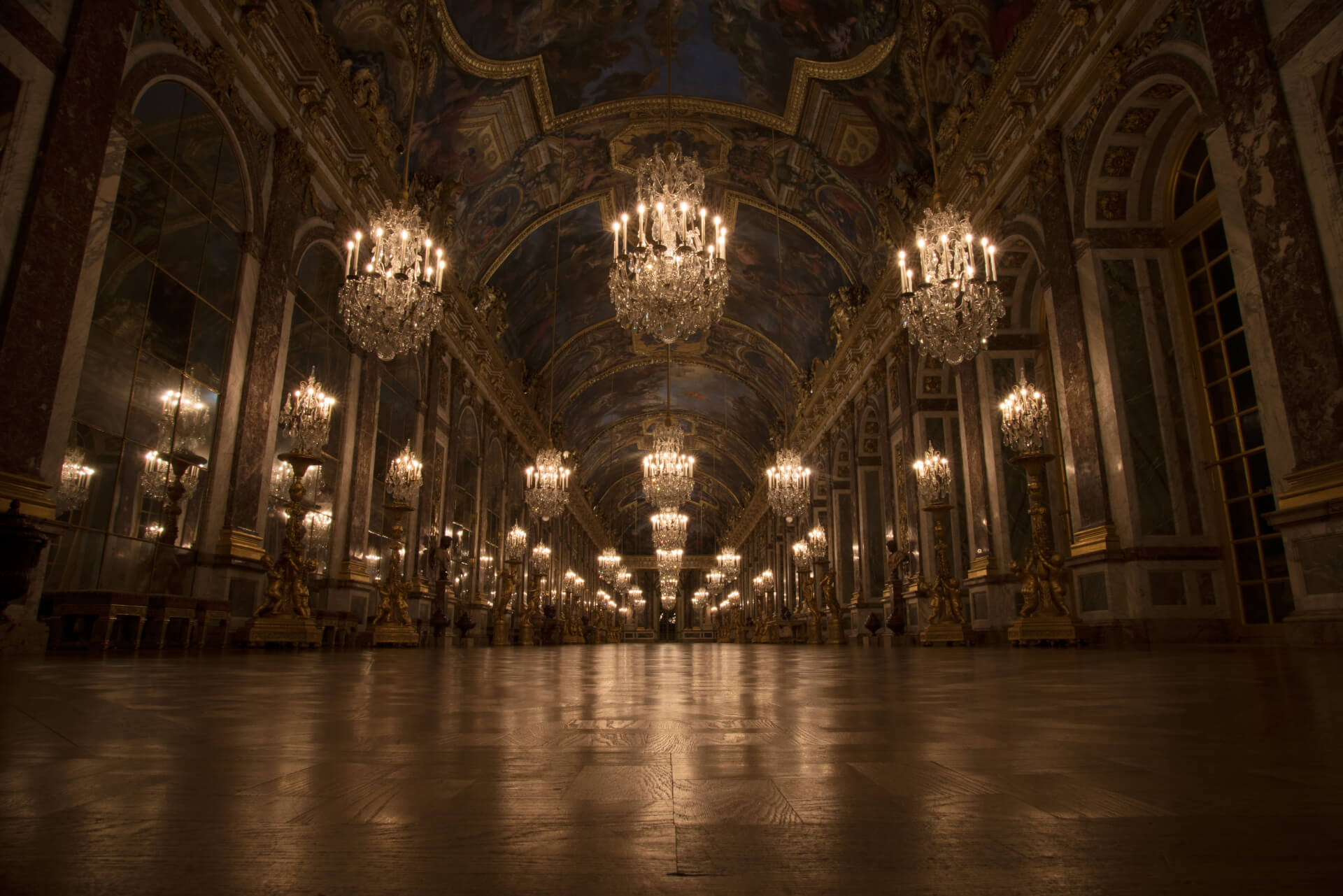
- This event has passed.

Technical meeting Lighting
27 February 2020 - 28 February 2020
Lighting in Royal Residences
Light is not only essential for contemplating the decorations and collections that adorn Palaces, Palace-Museums and Historic Houses, light is part of the object itself because it creates the atmosphere, and very often architecture and decorations have been designed according to their response to light. From small mirrored cabinets to the Hall of Mirrors in Versailles, the light is staged. An open view of the landscape is also essential to the visitor’s experience in most residences, conflicting with the screening of the windows.
Our lighting devices raise very complex problems because they have to address many constraints:
- Conflict between lighting and the conservation of collections
Whether light is natural or artificial, it has a destructive effect on many materials. We must therefore question the specific requirements of each object and in some cases envisage selective lighting, switching off in the public’s absence, or covers. Very often, a decorative, historical ensemble, which cannot be separated, includes elements that must be well lit (paintings or sculptures for example) and ultra-sensitive materials (textiles, lacquer etc.). The management of natural lighting is subject to innovation, from UV filters for blinds to various screening processes. In all these areas, research in preventive conservation allows us to refine recommendations and question some received ideas.
- Accuracy in recreating the pre-electric era
One of the great challenges of modern lighting in Historic Houses is the evocation of candle-lighting. The light bulbs used in light fixtures have long been worryingly mediocre and progress in this area has been slow. An overview of new technical solutions and aesthetic choices is particularly useful. There is also the question of the exclusive use of historical sources (candlesticks, sconces, girandoles etc.) or the presence of modern equipment that is more or less hidden, in complement (spotlights, LED ramps). Another interesting question is the possibility of completely avoiding the use of electricity in some spaces in order to preserve a more authentic experience, which severely restricts visiting conditions (opening hours, seasons, etc.). Light is also a subject of historical study. It would be very useful to summarize the knowledge of historic residences about the development of their lighting systems over time: practices, requirements and consumption levels according to the era, types of light-fitting, candles, oil, gas, electricity, and inventions which have had an influence on the decorative vocabulary. For example, several French palaces have worked on the restitution of quinquets or Carcel lamps developed in 1800 and massively used in the first half of the 19th century.
The viewing quality of an environment is a very subjective concept and the experience differs considerably from one visitor to another. Few investigations have been devoted to this subject. Illumination levels affect viewing precision and strengthening it can help compensate for short-sightedness, for example; the use of binoculars, which is surprisingly seldom suggested in Historic Houses, allows the visitor to appreciate details at a distance, while providing excellent vision, even of poorly lit objects.
Other methods may be envisaged to improve the visitor experience in low lighting. Finally, it might be useful to discuss safety-lighting regulations, which can be very intrusive in our historic spaces.
The sheer scope of this topic leads us to suggest that we focus on interior lighting in this meeting and that we keep the question of the exterior, architectural and garden lighting, parties and night events for another time.

